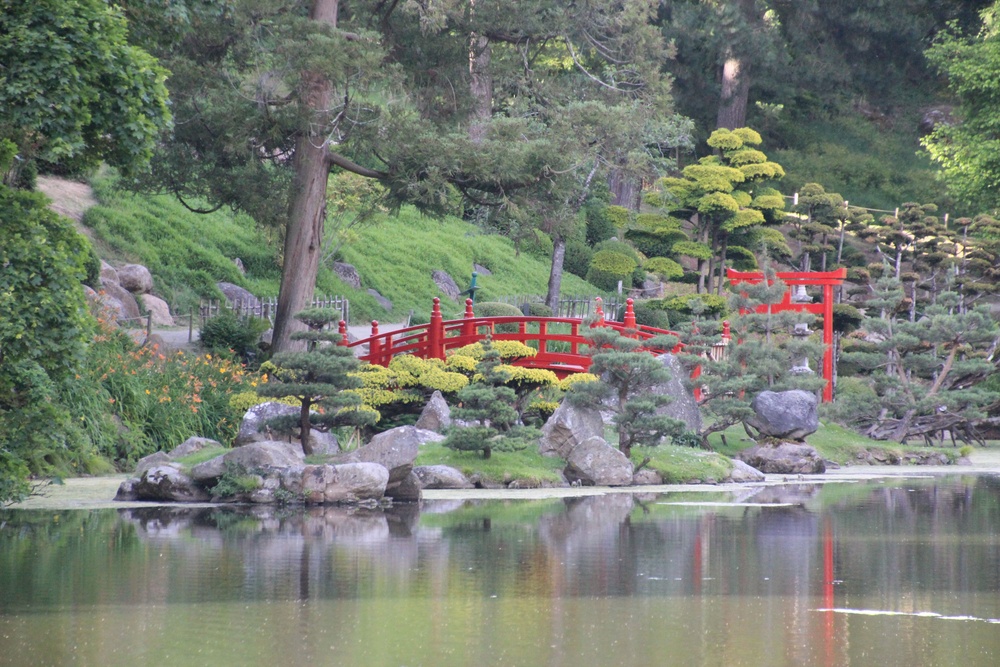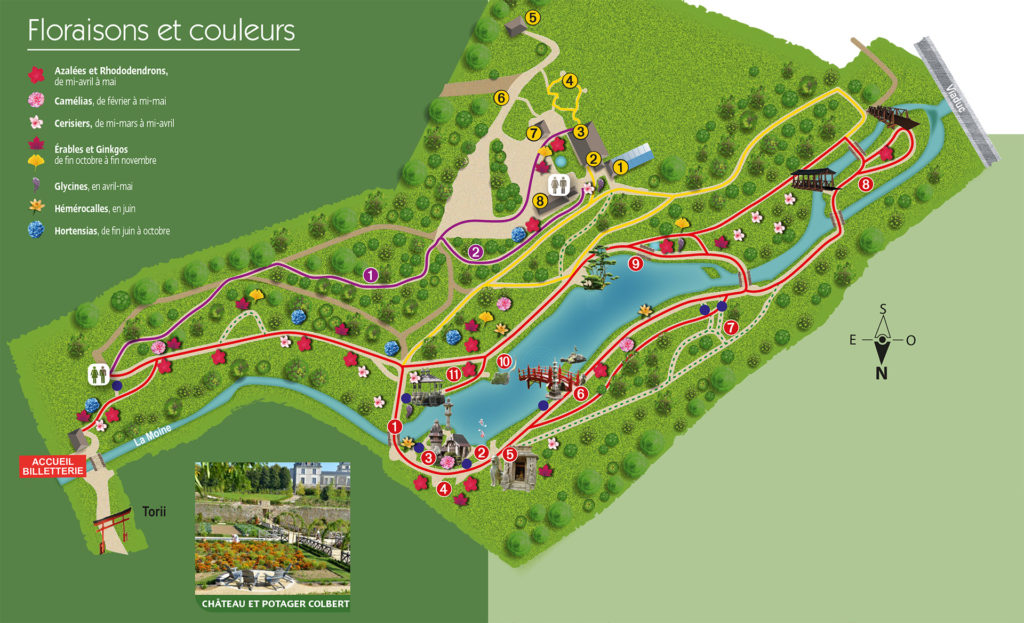Kamiplay, rencontre entre cosplayeurs et photographes les 12 et 13 juillet 2025
Home | By day

The style of the garden is inspired by the great walking parks of the EDO period (early 17th century to late 19th century).
Like a living painting, the landscape has been composed over time and is in constant evolution. It is based on a few major aesthetic principles:
The Parc Oriental of Maulévrier is a garden of transformation where nature is admired as a symbol of time, giving rhythm to the seasons.
With more than 400 species, the vegetation in the Parc Oriental marks the seasons by its variations in colour throughout the year: cherry trees in bloom of white and pink (Hanami) in spring, the shades of green in summer, the blaze of maple leaves in autumn (Momijigari).
As a metaphor for the cycle of life, spring symbolises youth, summer adulthood, autumn the wisdom of old age, and winter evokes a period of rest before the new season. The water flow in the garden from east to west represents the sun’s journey from sunrise to sunset.
The aesthetics of the Parc Oriental arises from the symbolism that permeates its landscapes. Some elements in the park are typical of Japanese gardens:
The Japanese lanterns (Ishidôrô), all unique, symbolise the presence of man and knowledge.The Asian elements brought by Alexandre Marcel following the 1900 Universal Exhibition reinforce the symbolism of the garden (temple, Khmer statues, Thoja).



During your walk, perspectives and landscape windows reveal themselves according to the principle of “hidden-revealed” providing the visitor with a progressive discovery of the garden.
